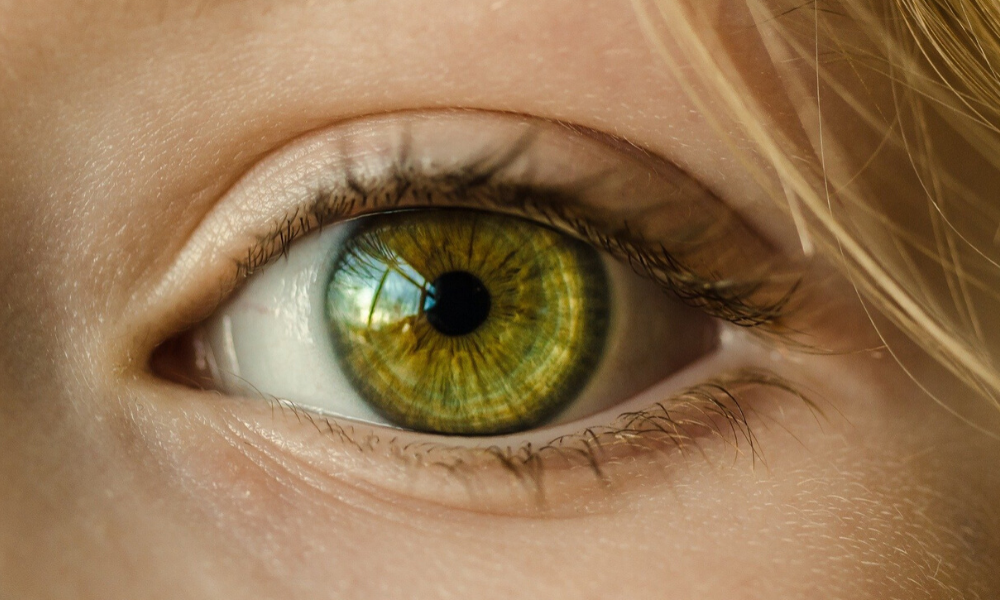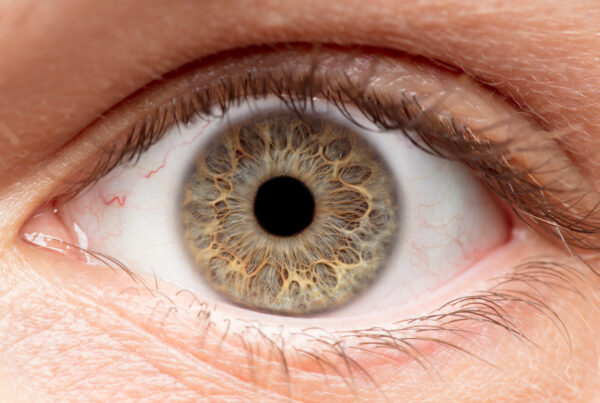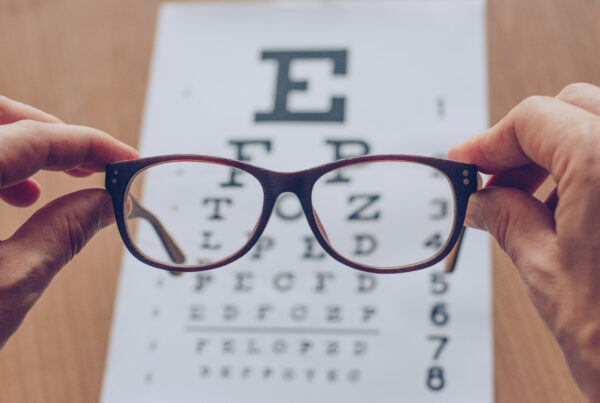
Eyesight involves two different abilities. One is called Acuity. That is your ability to see details, read print, recognize faces, and things like that. The other is called Visual Field. That is your ability to see the area around you, detect movements, and perceive speed and direction. We test Acuity with an eye chart to see what you can read when your eye is in the best focus. We test Visual Field with an instrument that presents a target at various positions around you and asks if you can see it.
The importance of measuring your Visual Field is easy to understand when you know what the test can find out about your health. A Visual Field test can find a brain tumor, show the damage from a stroke, or the damage from diseases like Glaucoma. A very famous doctor last century described your Visual Field as “an island of vision in a sea of darkness” and modern Visual Field testing is like making a topographical map of that “island”.
Your brain divides your visual world into a right side and a left side. That’s why a stroke can affect one side or another. But your brain gets right side and left side information from both eyes. So, if you have a problem in your brain that affects your Visual Field, it does that to the Visual Field of both of your eyes. The size of the Visual Field problem and how it affects both eyes, can locate a problem in your brain very accurately.
Your eyes divide your visual world into a top half and a bottom half. That’s because the nerve fibers that carry the vision to your brain run in an arc along the top and bottom of the retina in the back of your eye. Also, the blood vessels that bring nourishment and oxygen to the retina, branch into a top half and bottom half when they enter your eye through your optic nerve. So, problems with your Visual Field that just affect the upper or lower half of your vision on one side tell us that the problem is located in a particular eye and not in your brain. It will also tell us what part of that eye has the problem. If there is a brain tumor, the Visual Field can help determine if it is growing or stable, and if treatment of the tumor is successful.
When you have Glaucoma, the pressure inside your eye can get high enough that over time it will crush the fibers in your optic nerve and damage your Visual Field. Since the fibers that get damaged first are at the outside edges of your Visual Field, you don’t notice the problem until enough fibers are crushed to affect most of your side vision. The Visual Field test can detect that damage much earlier than you can see it and that helps to determine if you have Glaucoma. Doing the same test annually will show if your Glaucoma treatment is working or if the Glaucoma is continuing to damage your Visual Field.
There are some medicines that can cause damage to your Visual Field, before you can even notice it. When you need those medicines to treat serious medical problems, your doctor will often have you get regular Visual Field tests to determine if any toxicity is starting so the mediations can be stopped or reduced to avoid problems before they become noticeable.
Taking a Visual Field test is difficult for some people. The big instruments that have done the test for many years need you to hold your head still in a fixed position, in a dark room, and it can be tiring, especially for elderly patients. At SureVision Eye Centers we have a new Visual Field instrument that uses the same technology used in popular video games. You just have goggles that you comfortably wear sitting in the exam room. The test just takes a few minutes for each eye and is very easy for patients who are in a wheelchair.
When you look at the printed page of your Visual Field test, you will see a pattern of light gray, dark gray and black. The black is where you can’t see, and you want that to be very small, and not change from one visit to the next. Your doctor can tell you what the pattern means and the computer will even compare your results to other people your age, with normal eyes, to show what may be different for you.
Contact Us


